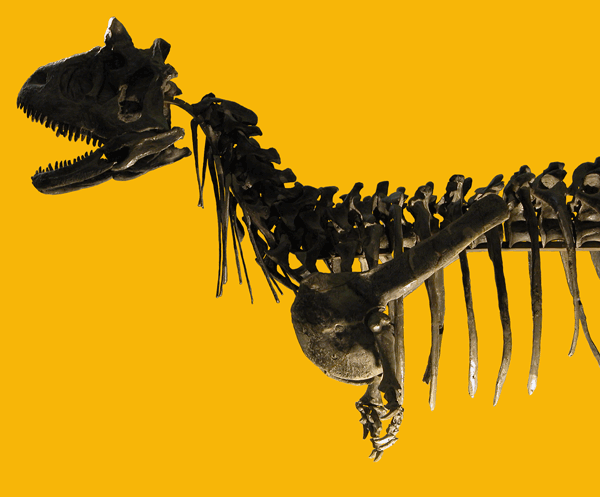

Carnotaurus (“flesh bull”) lived during the Early Upper Cretaceous, about 80 million years ago. His skeleton was found by José Bonaparte in 1984 in the La Colonia Formation, near Bajada Moreno in Chubut Province, Patagonia, Argentina. The skeleton is nearly complete — only the legs from the calf down and the last half of the tail are missing. Carnotaurus was 33 feet (10 meters) long, but his skull is relatively short for a theropod dinosaur — it is only 22 inches (57 cm) long. Some scientists (Gerardo Mazzetta, Richard Fariña and Sergio Vizcaíno) think that Carnotaurus’s skull may have been kinetic. And like his fellow theropod Tyrannosaurus, he had muscular, but tiny, arms. It should be noted, though, that the two species are only distantly related — Carnotaurus is a member of the Ceratosauria, while Tyrannosaurus is a member of the Tetanurae. Also, Mazzetta and his colleagues believe that Carnotaurus was a faster and more agile animal than Tyrannosaurus. The most unusual features of Carnotaurus are the “horns” on his skull. These could have served to frighten other dinosaurs, or to attract a mate. The other interesting thing about the type skeleton is that skin impressions were found. They show that Carnotaurus had rather knobby skin.


